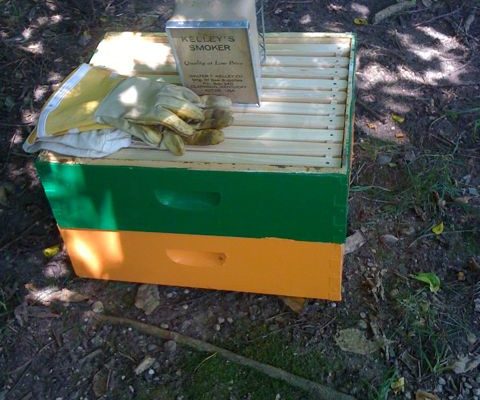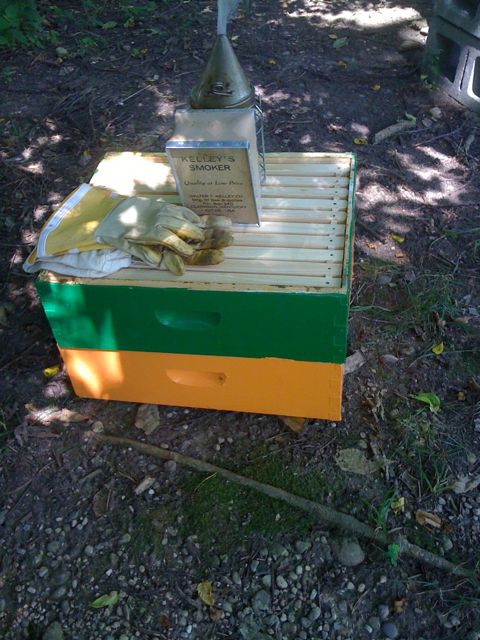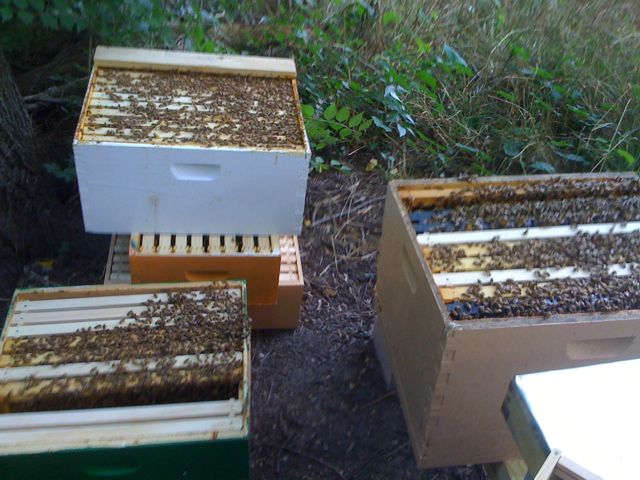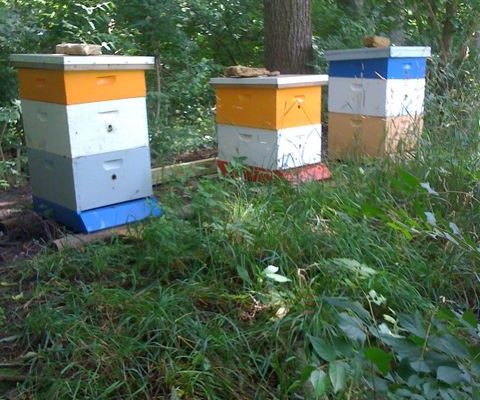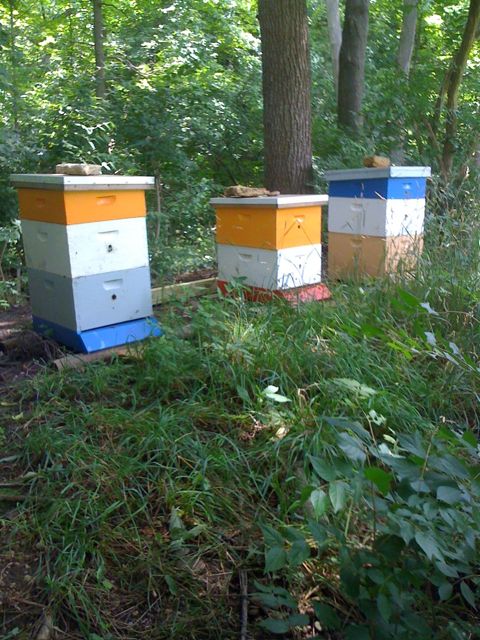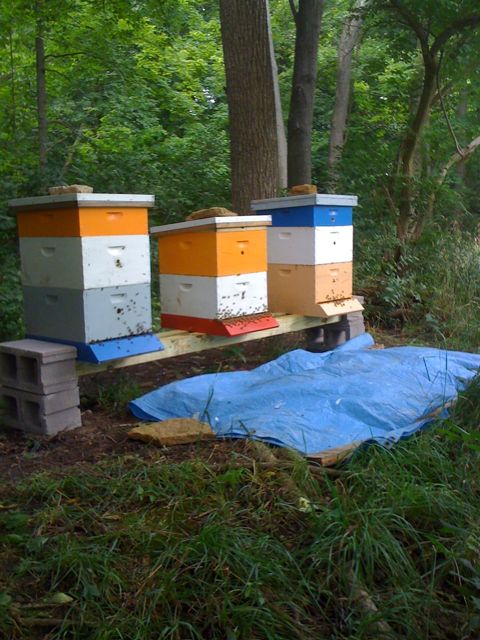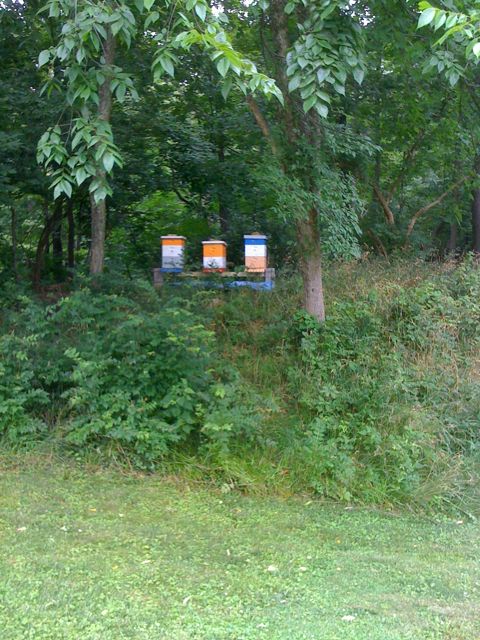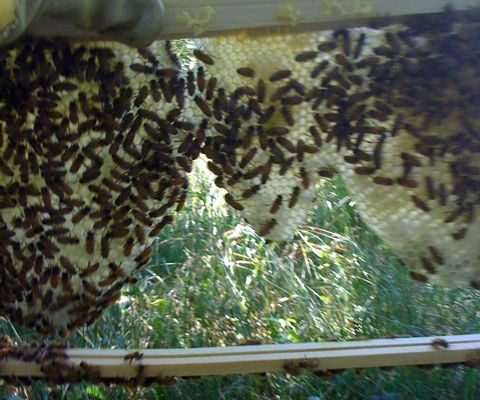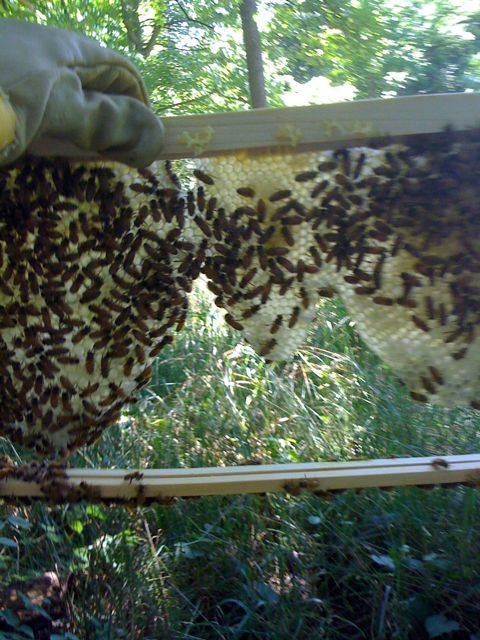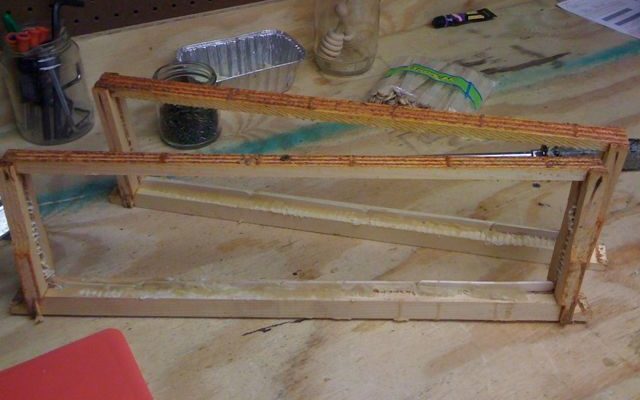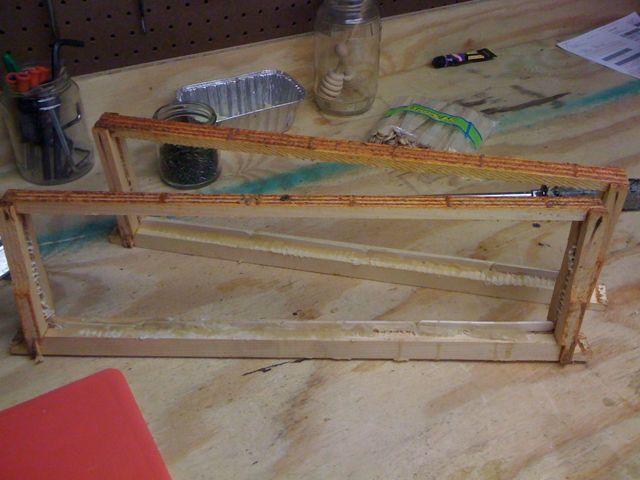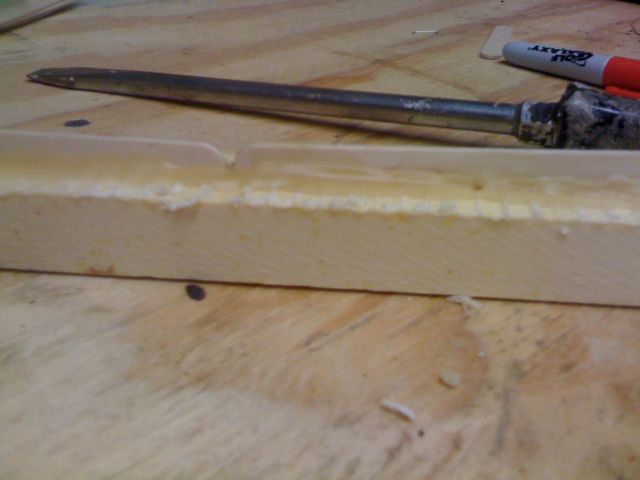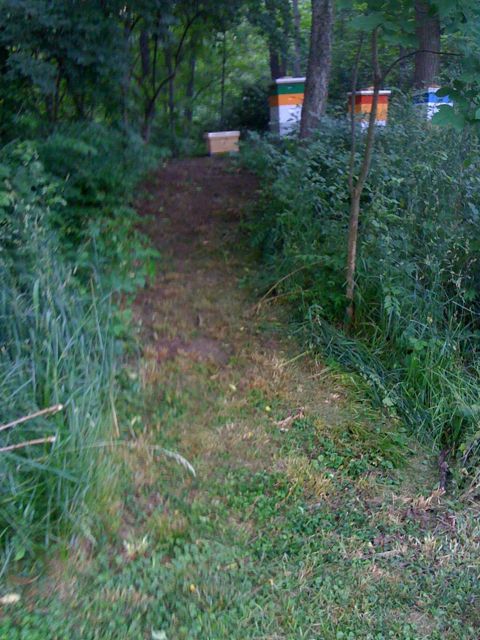Here’s the good news as promised, Reader. The bad news, as you’ll recall, is that the bees from the tree have now been combined with the Girls of Summer, and the small swarm I collected last week absconded.
But on Sunday’s inspection of the remaining four hives, I found two absolutely gorgeous queens at work. The queen in Tomboys was moving around on comb the bees had drawn on their foundationless frames. It was beautiful to see. And the queen in Girls of Summer is HUGE. I was spellbound watching her (also moving about on comb drawn on foundationless frames). I don’t know why it’s so uplifting to spot the queen and then to see how healthy she looks and how calm she is and how wonderful the hive is doing. But, I was uplifted.
Another thing that really surprised me was the health of the split hive. In July I took a frame containing one or two queen cells from Tomboys; from other hives I added two frames of brood and a frame full of honey, and I started a new hive. And though they haven’t drawn new comb since then, they’ve certainly filled the frames with which they began, and those frames were covered with bees. The colony seemed calm and relaxed and healthy.
I’ve decided to move the split hive into a 5-frame nuc for the winter, though. There’s too much empty space around the filled frames (they’re currently living on 4 deep frames hung in a stack of 2 medium boxes), and that’ll be hard to heat in the winter.
One thing I’m learning about beekeeping…timing is everything. Seriously…that “To everything there is a season” thing from the Bible makes more and more sense as I get older.

